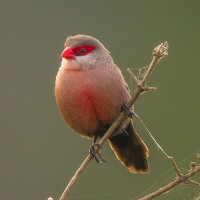Beschreibung
Although the nature reserve is relatively small the biodiversity can be very high with a large number of interesting birds. The landscape can roughly be divided in three elements:
- In the lagoons and their surrounding reed belts you can find Kolbenente, Marmelente, Wellenastrild, Purpurhuhn, Weißbart-Seeschwalbe, Seidensänger, Zistensänger, Blaukehlchen and more.
- In the rocky parts west of the parking lot (see map) there are Blaumerle, Felsenschwalbe, Wiedehopf, Bienenfresser, for example.
- And depending mostly on the presence of water, a drive or walk around the surrounding wetlands (Marjal d'Almenara) with their rice fields can also be worth visiting! Sometimes even more than the actual nature reserve! You can find Rosaflamingo, Sichler, Löffler, Zwergdommel, Rohrdommel, Rallenreiher, Purpurreiher, Seidenreiher, Stelzenläufer, for example.
Details
Zugang
The nature reserve is located between the town of Almenara and the beach, just next to the road CV-2310. Visitors mostly come by car (there is a parking lot just next to the road), but as it is only approx. 3 km from the town of Almenara you could also take a bike or even walk.
The nature reserve itself is then explored on a circular route, which is also wheelchair accessible. There are bird hides and explanatory panels along the route.
Please also consider visiting the rocky areas near the parking lot.
I suggest to come early in the morning, maybe even at dawn, birds' activity decreases fast towards noon.
Depending mostly on the presence of water, a drive or walk around the surrounding rice fields might also be worth visiting!
See map for directions and (small) observation towers.

.jpg)

.jpg)
